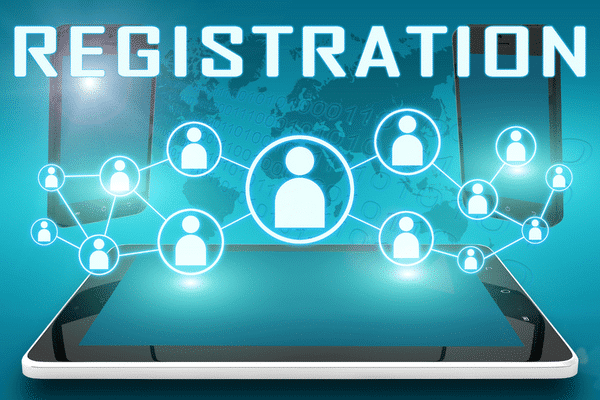B2B marketing and sales executives have identified webinars as the top choice for finding high-quality leads. With majority of leaders agreeing, not employing a B2B webinar strategy in your marketing is leaving money on the table.
A successful webinar campaign can be the key to unlocking new leads and business opportunities, but you must get it right.
Survey interpreters found that a webinar without enough emphasis on pre-work, post-work, and participation will not be as effective as it should be.
We’ve put together this guide on how to create a B2B webinar that emphasizes these key areas.
Inside you’ll find actionable tips from finding the right topic to attracting attendees, all with the goal of helping you turn your webinars into a lead generation powerhouse.
See how it works.
Key Takeaways
- Webinars are highly valued by B2B marketing and sales executives for generating high-quality leads. Ensuring a webinar’s success involves significant pre-work, post-work, and active participation.
- A compelling B2B webinar should focus on actionable insights, covering topics from choosing the right subject to engaging potential attendees, aimed at transforming webinars into a potent tool for lead generation.
- Webinars offer an interactive, convenient, cost-effective, and flexible platform for connecting with B2B leads, with various types including product demonstrations, customer success stories, and industry updates, each tailored to specific business goals.
What is a B2B Webinar?
A B2B webinar strategy is a planned approach to using webinars to educate, engage, and convert business audiences. It focuses on delivering valuable content that addresses their pain points, positioning the brand as a trusted resource, and driving lead generation and sales.
Webinars are an efficient approach to reaching a large audience without incurring the expense of travel.
They are typically hosted by professionals or experts in the field and can be recorded and made available on-demand so that anyone can view them at their convenience.
Why Webinars are a Great Way to Connect with B2B Leads

Webinars are an effective tool for deepening connections with customers. They provide a platform to impart invaluable insights and form lasting relationships.
Webinars have four characteristics that make them an effective marketing tool:
- Interactive. Attendees can ask questions and participate in polls and surveys. It makes the experience more engaging and helps you gather valuable real-time feedback.
- Convenient. Regardless of where attendees are located, they can participate whenever they want. It is ideal for busy professionals who may not be able to travel to events or meet in person.
- Cost-effective. Your event is free of the cost of renting a venue or catering for attendees. And, if you record your webinar, you can use it as a lead-generation tool by making it available on your website or social media channels.
- Flexible. You can use them to deliver different content, such as presentations, tutorials, or product demonstrations. It makes them a versatile marketing tool that can be adapted to your specific goals.
These characteristics yield higher engagement rates, increased lead generation, cost-effective solutions, and enhanced visibility.
Now that you know the benefits of hosting webinars, let’s look at the types commonly used for businesses.
Types of Webinars that are Popular Among Businesses

Webinars can take on many forms and types, depending on the purpose that they are intended to serve. Here are the most common within the B2B setting.
1. Product Demonstration
Product demonstration webinars offer attendees the opportunity to see a product in action. These webinars can be beneficial for businesses that provide complex products or services like software or financial services. They are typically led by a business development representative who will walk viewers through the product’s features and benefits.
This webinar includes a question-and-answer session, allowing attendees to get clarification on any unclear points necessary for building trust and confidence. Businesses can host this event on different platforms and customize it to meet the specific needs of each business.
2. Customer Success Story
Businesses conduct a customer success story webinar to tell the story of how one of their customers has used its product or service to achieve success. These events are presented as a recorded conversation between the customer and a company representative, followed by a live question-and-answer session.
Customer success story webinars can effectively build interest in a product or service as they offer potential customers real-life examples of how they can use the product or service to achieve success. This webinar demonstrates the company’s commitment to customer satisfaction.
3. Industry Update
Industry update webinars provide attendees with the latest information on industry trends, news, and changes. They are usually led by a panel of expert guest speakers who offer their insights and predictions on the industry’s future.
These webinars can help businesses stay up-to-date on the latest developments, gain a competitive edge, and plan for future opportunities. These are also excellent sources of helpful insights for those considering starting a business or changing careers.
4. Live Q&A
A live Q&A webinar is a great way to get expert advice on a particular topic while engaging with an audience in real time. It is beneficial for both the company and the attendees.
Live Q&A webinars allow the company to reach a broad webinar audience with their expertise. They can also gain valuable feedback from attendees in real time.
For attendees, live Q&A webinars offer the chance to get their questions answered by an expert on the topic. They can also learn from the experiences of other webinar attendees.
5. How-To Webinars
A how-to webinar is an online seminar or webcast that helps viewers learn how to do something. They are usually led by an expert who breaks down the steps involved in completing a task, project, or goal.
Businesses can use how-to webinars to provide training on new products or services, show customers how to use their existing products more effectively, or share industry best practices.
It’s a great way to establish thought leadership and build credibility with their target audience. It can also be used to generate leads by offering attendees the opportunity to sign up for a free trial or download a complimentary e-book.
These are just a fraction of the webinars that businesses can host to generate leads, but each type has its own goals and strategies. Selecting the right webinar to host for your business will depend on what you want to accomplish.
So, how can you create a B2B webinar strategy that reaches your targets?
Creating an Effective Webinar that Converts Leads
Achieving this goal requires careful planning and execution.
Here are some key elements that you need to digest to develop an effective webinar marketing strategy:
The Anatomy of a Successful Webinar
The Goal:
A successful webinar achieves its predetermined goals.
Some common goals for webinars include:
- Increasing brand awareness
- Introducing new products or services
- Generating leads
- Nurturing current customers
- Creating thought leadership
- Increasing web traffic
- Improving SEO
- Boosting sales
- Providing customer education or training
- Building relationships with customers and partners
Each of these targets requires a specific approach but leads to one ultimate end – business growth. Determining your goal upfront will help you choose the best webinar format, content, and delivery for your webinar.
The Format:
Once you establish what you want to achieve with your webinar, you must select the right format. The three most common are presentation style, panel discussion, and live demonstration.
The format you choose will determine the flow and structure of your webinar. It will also affect the type of content you share and your interaction level with your audience.
Presentation-style webinars are the most common type. They are led by a single presenter who shares slides or a screencast with the audience. The presenter may also take questions from the audience throughout the webinar.
Panel discussion webinars are similar to presentation style but feature multiple webinar speakers. These webinars usually cover complex topics or present different perspectives on an issue. Each panelist usually has a specific area of expertise related to the topic.
Live demonstration webinars are what they sound like – live demonstrations of products, services, or processes. This webinar is led by a product expert who walks the audience through how to use the product. They may also include a question and answer session at the end.
Now, behind achieving the goal and getting the format into action are people – the presenter and the attendees.
The Presenter:
Presenters are the stars of the show.
They are the ones who will be sharing their knowledge, insights, or stories with the audience. So, selecting a presenter who is not only an expert on the topic but also knows how to engage an audience is crucial.
Here are the qualities of a good webinar presenter:
- They are clear, concise, and organized. Presenters understand the material they are presenting and can communicate it in a way that is easy for the audience to understand.
- They can answer questions from the audience and should be able to keep the discussion on track.
- They are friendly and personable. Speakers should make the audience feel welcome and create an environment where people are comfortable asking questions.
- They are well-prepared. This means the representative should have researched the topic and clearly understood what they were going to say.
- They are engaging and dynamic. Excellent presenters keep the audience engaged by using techniques such as asking questions, using humor, and providing interesting examples.
Here’s a very helpful video for webinar hosts. This tutorial will help you learn 9 tips and tricks for maximum engagement and seamless transitions:
- giving someone co-hosting privilege
- switching someone between being a panelist vs. attendee
- using “practice session” and how it looks inside the webinar
- the View options for attendees (Host View vs. Active Speaker View vs. Gallery View)
- all other options under “More” inside Zoom Webinar
- Q&A feature
- Polling
- livestreaming from within the webinar (info card – Restream livestream from Zoom)
- customizing livestreaming
The Attendees:
What about your target attendees?
Your attendees are the people you’re trying to reach with your webinar. They are your target audience; without them, all your efforts will be for nothing. They are the focal point of the entire webinar process.
Some points to consider when targeting attendees:
- Who are they? What is their demographic information?
- What are their interests? How can you find out what topics interest them?
- What are their pain points? What problems do they need help solving?
- What is their level of expertise? Are they beginners or experts?
Answering these questions will help you shape your webinar’s content and sales deck. It will also help you determine which type of webinar will most effectively meet their expectations.
This is why it’s important to understand your audience and what they want to get out of the webinar. Once you know your target audience, you can create a webinar that appeals to their needs and interests.
Now that we’ve covered the structure of your webinar let’s get into its substance.
Topics That Engage B2B Leads
How do you determine what topics to cover in your webinar?
Always remember that it’s all about your audience. Your webinar content must be carefully planned and well-researched to ensure it is relevant and engaging for your audience. It should also align with your overall business goals.
Here’s a guideline:
- Choose a specific topic that centers on practical advice your audience can apply to their business. Doing so can help your listeners get the most out of your webinar and make it more likely that they will tune in for future episodes.
- Make sure the topic can be easily covered in one hour. You want to ensure you have enough time to cover the topic thoroughly but not so much time that your audience gets bored or doesn’t have enough time to finish.
- Present a fresh topic that very few (or no one) have discussed in the past. Try to be the first to cover a new topic or introduce a new perspective on an existing topic. You want your webinar to offer something valuable that your audience has never heard before. It will make your webinar more unique and interesting for your audience.
- Keep these things in mind: relevance, practicality, uniqueness, and timeliness.
Making Your Webinar Interesting and Informative
Again, always keep your audience in mind when creating your webinar content. Your goal is to make the information relevant and interesting for them. You also want to maintain a presentation tone that aligns with your brand’s overall tone.
How to structure your webinar in an interesting and informative way? Here are some tips for doing that.
1. Start with a strong introduction
Grab your audience’s attention from the very beginning by starting with a strong hook. If you can pique their curiosity or make them laugh, they are more likely to stick around for the duration of your presentation.
2. Be relatable
Share personal stories, case studies, or examples to illustrate your points. It will help make your information more relatable and digestible for your audience.
3. Use visuals wisely
Webinars are predominantly auditory experiences, but that doesn’t mean that visuals are not important. Incorporate slideshow presentations, infographics, and other visual aids to break up the monotony of pure text-based content and keep your audience’s attention focused.
4. Be interactive
A major advantage of webinars over traditional educational formats is that they allow for two-way communication. Take advantage of this by incorporating polls, Q&A sessions, and other opportunities for your audience to interact with you and each other. Not only will this make your webinar more engaging, but it will also give you valuable feedback that you can use to improve future presentations.
5. Keep it short and sweet
Just because you have an hour allocated for your webinar does not mean you should use all of that time. Shorter webinars are often more successful since audiences have shorter attention spans online. Aim to keep your presentation under an hour, or even better, under 45 minutes.
6. End with a strong conclusion
Summarize the key points of your presentation or demonstration and end on a high note. It will leave your audience satisfied yet anticipative of the next webinar. Thank them for their time, and let them know how they can get in touch with you if they have any further questions.
Let’s just go back to what we said earlier, “without them (your audience), all your efforts will be for nothing.” So, one other thing you must secure is attendance.
Promoting Your Webinar and Generating Registrations

Doing this can be just as challenging as creating great content. You must generate interest and excitement for your upcoming event while ensuring that you target the right audience.
Here are a few ideas for getting people to sign up for your webinar:
1. Create a landing page
A well-designed landing page can do wonders for your webinar promotion efforts. Use this page to provide potential attendees with all the information they need about your upcoming event, including the date, time, topics covered, speakers, and how to register.
2. Utilize social media
Social media is a powerful tool for promoting just about anything these days, so of course, you should be using it to promote your upcoming webinars. Create social media posts, run ads, and utilize influencers to get the word out about your upcoming event.
3. Send email invitations
Email is still one of the most effective marketing channels, so be sure to utilize it when promoting your webinar. Send invitations to your email list, follow up with potential attendees, and use email to drive traffic to your landing page.
4. Leverage existing content
If you have existing blog posts, infographics, or other types of content related to the topics you’ll be covering in your webinar, be sure to promote these as well. It will help generate interest in your event and give potential attendees a taste of what they can expect.
5. Place ads
Paid advertising can effectively promote your webinar, especially if you’re targeting a specific audience. Try running ads on social media, Google, or other websites that your target audience is likely to visit.
6. Partner with other businesses
Explore partnering opportunities with other businesses, especially those with audiences similar to yours. You can reach a whole new group of potential attendees by promoting each other’s events.
7. Host a contest
Running a contest is a compelling way to generate excitement for your upcoming webinar. Offer prizes for those who register or share your event on social media. It will help you sway a larger audience and get more people interested in attending your event.
8. Use an expert speaker
If you can get an expert or well-known speaker to present at your webinar, promote this fact. Having a big name attached to your event will make it more appealing to potential attendees.
To achieve success, start promoting early and keep at it until the day of your event.
On to our final point…
Following Up with Attendees Post-webinar

The webinar may be over, but your job is not done yet. You must follow up with attendees post-webinar to keep the momentum going and turn those who attended into sales.
Your team can do this by sending out an email thank you note and a survey to get feedback on the webinar. You can also give attendees a discount code or a free trial period for your product or service.
Conclusion
Webinars are a great way to move leads down the sales funnel. But they only work if you have a solid strategy in place. With the tips outlined above, you and your marketing team can create a successful webinar to help you achieve your business goals.
FAQs
Here are other questions related to B2B webinar strategies that we have not discussed in the article.
What is the best way to get people signed up for your webinar?
There is no one-size-fits-all answer to this question but some general tips to increase signups include creating a compelling headline and description, making it easy for people to sign up, and offering incentives to register. You must also promote your webinar well in advance, so potential attendees have enough time to sign up.
What is the best webinar software?
There are several webinar software options to choose from, but the best one for your business will depend on your specific needs. Some popular choices include GoToWebinar, WebEx, and Adobe Connect.
How do I advertise my webinar?
Here’s how to go about this:
1. Create a strong and catchy headline for your webinar. This is what will first capture people’s attention, so make it count!
2. Write a compelling description of what your webinar will be about. Include key points and benefits that attendees can expect to gain from attending.
3. Promote your webinar on all your social media channels and other relevant online platforms. Use powerful visuals (e.g., images, videos) to grab people’s attention.
4. Use email marketing to reach out to your list of subscribers and let them know about your upcoming webinar. Include a signup link in the email so they can easily register.
5. Run targeted ads on social media and Google AdWords leading up to the event. These marketing tools will help you reach a wider audience and get more people interested in attending your event.
What are the best ways to engage with participants during a webinar?
Some of the best ways to engage with participants during a webinar include:
1. Asking questions and encouraging interaction
2. Using polls and surveys
3. Sharing helpful resources
4. Offering incentives
5. Leaving time for Q&A at the end of the webinar
6. Following up with attendees after the event is over